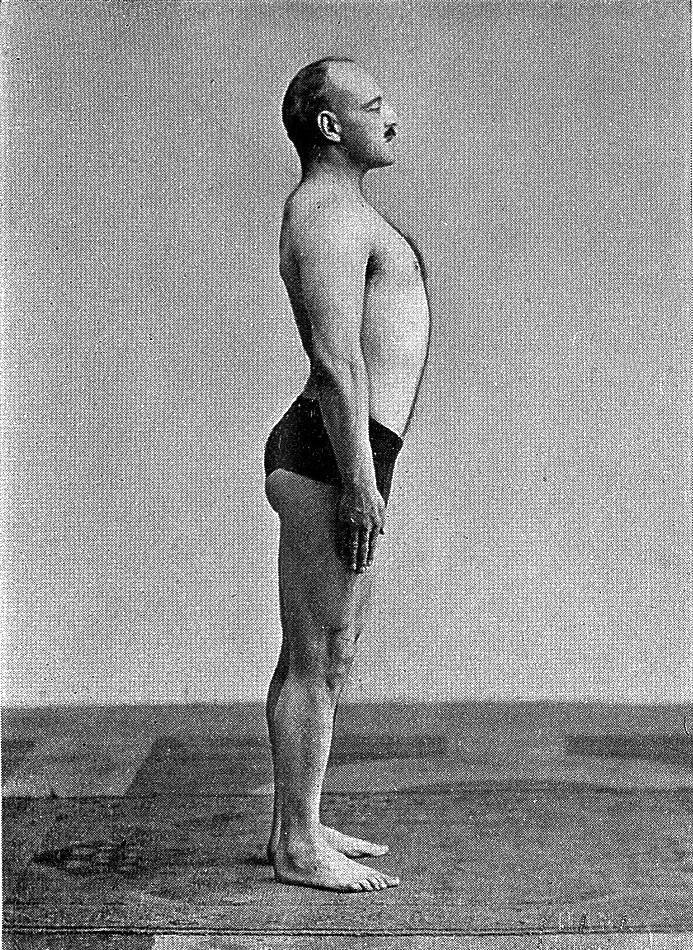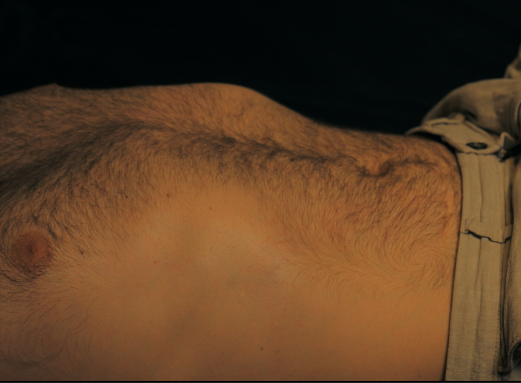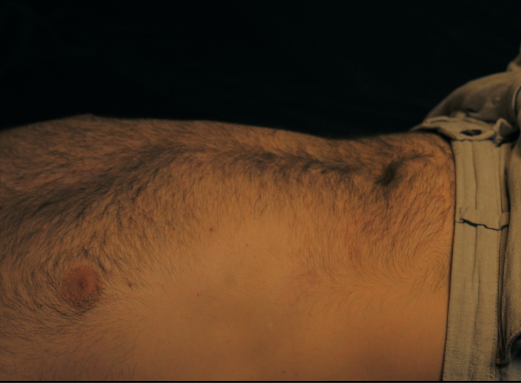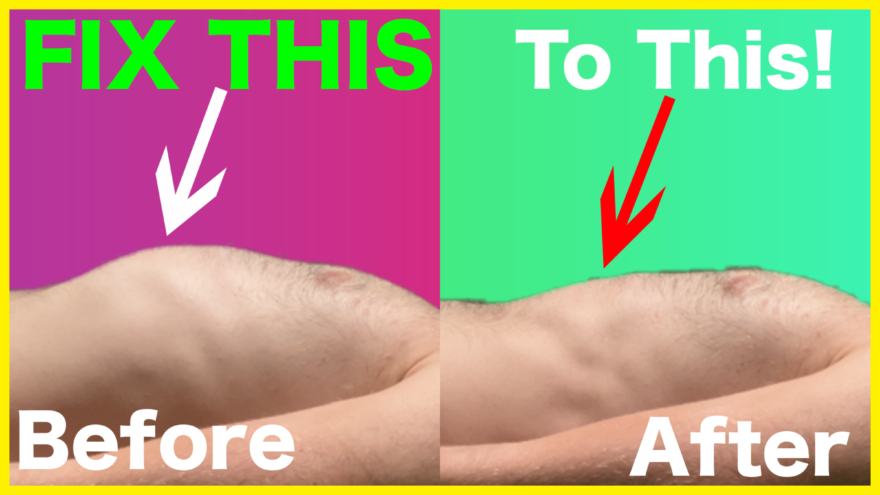Table of Contents
If your lower ribs jut forward, here’s the cure
If your ribs stick out or you have a deep arch in your lower back, you MUST check this post out.
Because your ribs looking this way…is NOT structural.
Instead, your body is using a movement strategy that contributes to the lower ribs appearing prominent, impacting your ability to contract your abs and move well.
Below, you’ll learn why rib flares exist and what you can do about it.
Watch the video and read the post below to learn more!
Why do the ribs flare?
Gravity is continuing to push us downward, and we have to exert a force against it to say upright.
The easiest way for our body to do this is to shift our center of mass forward. When this action occurs, more internal rotation is produced. This action puts more force into the ground, keeping us upright.
Consequently, the lower ribcage may appear more forward, smaller side to side, and the lower back curve increases.

When this action happens, the contents within our body (abdominal and airflow) will also be more forward.
How to fix rib flare
If the ribcage shifts forward, do we merely shift it back and life is good?
No.
If only it were that easy.
Remember, the ribcage is not only forward, but the shape has changed. We have had reduced lateral dimensions. Pulling the ribcage back alone will only change its position in space, not its shape.
That also presupposes that we can reduce the resting muscle activity of the backside musculature, which without a shape change is quite difficult.
Instead, we have to change BOTH the shape and location. Doing this strategy will create an ability to move our abdominal contents and airflow backward, positively impacting lower rib posture.


Breathing strategies that improve rib flare
Breathing creates ribcage movement, so particular breathing strategies can positively influence lower ribcage position.
The breathing sequence needed to improve lower ribcage dynamics is as follows:
- Silent nasal inhale
- Long, slow, and easy exhale
- As the exhale occurs, the lower ab wall should get smaller (not a draw-in, but it should drop backward) and the lower ribcage should move in a similar vector
- The ab tension during the exhale ought to be maintained (no more) during the next inhale
You can try it in this video below:
This sequence will allow both the ribcage to change its shape (by restoring normal breathing dynamics) and over time encourage the ribcage to move backward. This change occurs because the diaphragm (your breathing muscle) fully ascends more easily, allowing the abdominal contents to move more upward. The inhale with the ab tension will encourage the abdominal contents to move more backward than the rib flare strategy, reducing backside muscle activity.
The key with this sequence is that you don’t just get ribcage position and shape to change with one breath. You must use several breaths to elicit the desired movement adaptation.
What we DON’T want to see are the following compensatory strategies:
- Crunching
- Forcing the ribs down
- Poor exhale
- Losing lower abdominal muscle activity during the inhale
- Bracing the abs
Exercises that improve rib flare
The breathing sequence above is key to improving ribcage dynamics, but we also have to consider what body positions are most advantageous to getting the movements we want.
If the ribcage is forward, it will be easiest to start in a position where the ribcage is inherently more forward.
If you select an activity where the ribcage is inherently back, you may put the ribcage at end-range, and you or your supreme clientele may have to cheat their way into the position.
Because of gravity, the most forward ribcage position will occur in the prone position. Gravity biases the abdominal contents and airflow forward, pushing the ribcage forward in the process.
From here, the aforementioned breathing sequence will encourage the abdominal contents (and ribcage) to move backward.
The first position I’ll start with is prone:
If prone is easy, you can progress to quadruped on elbows:
If that is easy, then you can go with quadruped:
Now, we eventually need to move to the supine position (the hardest because gravity is pushing the lower ribcage backward), but we may not have restored enough range to minimize cheating. We need a position that bridges the gap.
For that, sidelying activities work great. I’ll start with a short lever side plank.
The starting version involves no body lift
Then progressed to coming up:
If easy, progress to long lever side planks, either straightening one leg:
Or two:
Once you’ve mastered sidelying, it’s time.
Time for supine.
The easiest way to sense ab and lower ribcage position is with hooklying. I start most people with the hooklying tilt progression shown above.
If you want to intensify the activity, a reach can be incorporated.
A narrow ribcage (Narrow infrasternal angle) would benefit from a forward reach:
And a wider ribcage (wide infrasternal angle) a 110º shoulder flexion reach:
Now, these strategies are useful, but we don’t live on the ground. We have to incorporate this strategy upright. In higher intensity activities.
One of the easiest exercises to feel this is a landmine press:
You can also see this in loaded lower body exercises such as a squat:
Sum up
So the big key is to drive the dynamics needed to change the lower ribcage position and shape. Doing this will reduce the flare, and improve your overall mobility.
To recap:
- Rib flares occur because our center of mass shifts forward to stay upright
- Improving rib flare involves changing ribcage position and shape
- Breathing and progressive positions can be utilized to improve ribcage dynamics and reduce rib flare
Did you find these strategies useful? Comment below and tell the fam your successes and failures

